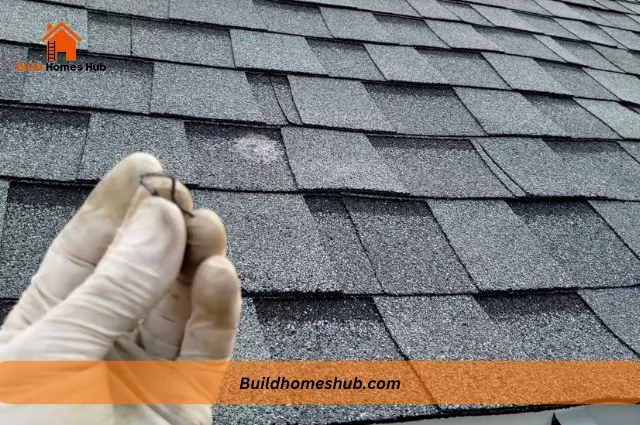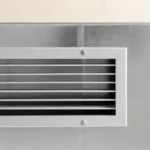Using staples to secure roof shingles has become a topic among homeowners and contractors. While some believe that staples provide a quick and easy solution, others question their effectiveness and durability.
In this article, we will explore the pros and cons of using staples on roof shingles and provide a comprehensive analysis of their impact on the longevity and performance of your roof.
Can You Staple Roofing Shingles
No, stapling is not recommended for attaching roofing shingles. The proper method is to use roofing nails. Roofing shingles are typically attached to the roof deck using roofing nails. Stapling is not recommended for attaching roofing shingles, as the staples can easily come loose, and the shingles can shift or blow off during strong winds.
In some parts of the United States, the use of staples for roofing shingle installation is banned due to the risks associated with this attachment method. It is important to follow local building codes and industry standards to ensure the proper installation of roofing shingles and to maintain the integrity of the roofing system.
The Pros of Using Staples on Roof Shingles
One of the primary advantages of using staples on roof shingles is their speed and ease of installation. Unlike nails, which require a hammer and a steady hand, staples can be quickly installed with a staple gun, reducing the time and effort required for roofing projects.
Additionally, staples are generally more affordable than nails, making them a cost-effective option for budget-conscious homeowners.
The Cons of Using Staples on Roof Shingles
Despite the benefits, several drawbacks to using staples on roof shingles must be considered. The first and perhaps most significant is their lack of durability. Unlike nails, which are designed to withstand the elements, staples are prone to rust and corrosion, which can compromise the integrity of your roof over time.
Furthermore, staples lack the holding power of nails, making them more susceptible to wind damage. In high winds, staples can become dislodged, allowing shingles to slip and creating gaps in your roof.
The Impact of Staples on Roof Performance
While staples may offer a quick and cost-effective solution for securing roof shingles, they need more durability and holding power to make them more reliable than nails.
As such, it is important to weigh the pros and cons of using staples on roof shingles and consider their impact on your roof’s longevity and performance. For best results, it is recommended to use a combination of staples and nails, ensuring that your roof is securely fastened and protected from the elements.
Potential Consequences of Using Staples
- Lack of durability: Staples are prone to rust and corrosion, weakening the roof’s integrity over time.
- Lack of holding power: Staples lack the holding power of nails, making them more susceptible to wind damage.
- Loose shingles: In high winds, staples can become dislodged, causing the shingles to slip and creating gaps in the roof.
- Violation of building codes: In some parts of the US, the use of staples for roofing shingle installation is banned due to the associated risks, so using staples could violate building codes.
- Reduced performance of the roof: Staples does not provide the necessary durability and holding power to ensure reliable performance of the roof, and their use may compromise the longevity and performance of the roof.
The Benefits of Nailing Shingles
Nailing shingles is the preferred and most effective method for securing shingles to your roof. Nails provide a stronger hold than staples, ensuring your shingles stay in place even during the harshest weather conditions. In addition, using nails allows for proper ventilation of your roof, which can extend the life of your shingles and prevent costly repairs due to moisture damage.
How to Properly Nail Shingles
Properly nailing shingles is crucial for a successful roofing system. Here are the steps you should follow:
- Start at the bottom edge of your roof and work your way up.
- Nail each shingle at the top and bottom of the slot, using four nails per shingle.
- Space your nails six to eight inches apart.
- Be sure to drive the nails in straight to avoid damaging the shingle.
- Use roofing nails, not regular nails, as they are designed specifically for roofing and provide the proper holding power.
Recommended Fasteners for Shingles
The following are some of the most commonly recommended fasteners for shingles:
- Hot-dipped galvanized nails: These nails are strong and durable, and the hot-dipping process provides additional protection against rust and corrosion.
- Stainless steel nails: These nails offer exceptional resistance to rust and corrosion, making them a good choice for coastal areas or other high-moisture environments.
- Aluminum nails: These nails are lightweight, strong, and will not rust or corrode.
- Galvanized staples are a good choice for thinner shingles in mild climates.
When installing shingles, it is important to use the proper fastener and to follow manufacturer recommendations and local building codes. Doing so can ensure a long-lasting and beautiful roof for your home.
Most Common Mistakes Made During the Installation of Roofing Shingles
1. Improper nailing
Nailing too tightly or too loosely can cause the shingles to shift or blow off during strong winds.
2. Incorrect fastener type
Using the wrong type of fastener can compromise the hold of the shingles on the roof.
3. Improper ventilation
Improper ventilation can damage moisture, causing the shingles to deteriorate and fail sooner.
4. Ignoring local building codes
Failing to follow local building codes can result in an improper installation and can lead to problems with the roofing system.
5. Neglecting to clean the roof deck
A dirty roof deck can cause problems with the adhesion of the shingles, making them more susceptible to shifting or blowing off during strong winds.
6. Improper overlap
Improper overlap of shingles can result in leaks and decreased durability of the roofing system.
7. Not allowing for proper expansion and contraction
Roofing shingles expand and contract with temperature changes. Not allowing for this movement can result in cracking or breaking of the shingles.
FAQ
When Did They Stop Using Staples for Roofing
The use of staples for roofing has decreased in recent years due to building codes banning the practice. The year that staples were banned varies by region and building code, but it has been a trend in the construction industry to switch to nailing shingles for a stronger hold. For example, Staples were banned in the Florida Building Code on March 1, 2002.
What Size Staples for Shingles
For cedar shingles, the recommended size of staples can vary depending on the thickness of the shingles and local building codes. However, a common recommendation is to use 1 1/4″ or 1 1/2″ galvanized or stainless steel staples. It is always best to consult the manufacturer’s recommendations and check with your local building department for specific requirements in your area.
Can You Staple Roofing Felt
Yes, roofing felt can be stapled to a roof deck, but it is recommended to use roofing nails instead, as they provide a more secure hold. Staples can be prone to bending or breaking and may not provide enough holding power in high winds or severe weather conditions. Additionally, staples do not provide a watertight seal like nails do.
Final Thoughts
Following these best practices for installing shingles can ensure a strong, long-lasting roofing system. Don’t let stapling shingles cause your roofing problems. Switch to nailing and enjoy peace of mind during severe weather. Contact a professional roofing contractor if you need assistance or have any questions.
I like to think I can help you with all the information you need on home renovations and DIY tips. You should subscribe.











